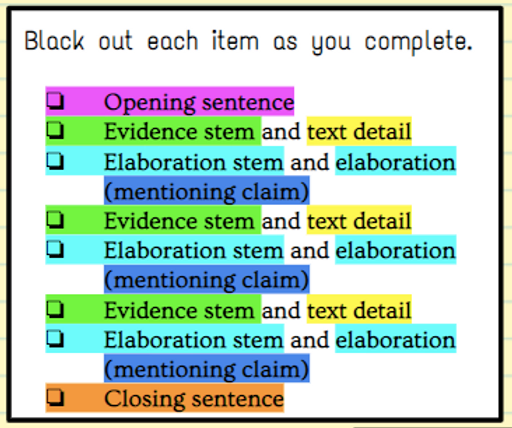Citing Concise Textual Evidence: Avoiding "Quote Plopping"
- Megan Mariano
- Aug 29, 2024
- 3 min read
Updated: Sep 17, 2024

One of the key things we teach our middle schoolers all year is to support their thinking with textual evidence. In the younger grades, students start with paraphrasing and eventually work their way up to quoting actual lines from the text. By the time they are in middle school they should know how to quote AND paraphrase to support their thinking.
What I find is, once they are solid in that concept, they tend to just plop quotes in. I call this quote plopping. I want them to elevate their writing by not just finding a quote and copying and pasting it in. When doing this, they lack their own voice in their writing and risk plagiarism. Plus, the writing, especially in essays, is so dry. To begin the process of writing stronger essays, I work on a very specific lesson to avoid this.
But first...
So, before they can properly avoid plopping quotes, they really need to know how to do two things.
This blog post outlines everything.
Finding and using text evidence: All students are at different levels, so it's important to spend some time establishing they know HOW to find text evidence in the first place. This lesson spends a lot of time on that skill. Students work from paraphrasing to quoting. They also learn to narrow down quotes, determine weak vs. strong evidence, and really narrow down how to EXPLAIN their quotes.
Writing a proper reading response/body paragraph for essay: Once they are good with finding and using text evidence, I teach my students a very specific structure. This structure they use pretty much all school year in essays and formal reading responses.
Here is the checklist they use. I give them lots of examples of how to utilize this and they work on breaking it all down in this activity.
Avoiding the Quote Plop

Once students know how to write a solid response and how to FIND text detail, it's now time to focus on being concise. With a lot things, I like to start out with a read aloud. Dan Santat is an amazing artist and author, so I use the book Drawn Together. It's super short, too which is even better!
I give them a basic question about the story; one that could be a reading response. The answer to the question is written well, but with ONLY quotes to support the answer. They take time to determine what they notice.
After that is the teaching component. The key to avoiding quote plopping is to add context with the quotes. Providing this context allows the audience to know more about the story. This is especially helpful if you are doing reading workshop. To add context, students must provide information about what is happening in the moment in which they are quoting. They do this by breaking up the quote with their own words.
So, they are paraphrasing AND quoting which truly elevates their writing.

Next, they try it with another question for Drawn Together. I have them list ALL the quotes they could use FIRST. It is still very essential to use quotes when supporting your thoughts about writing.

After this, they write a reading response PLOPPING the quotes, to show how not to do it. Then, they write a response to fix the plops, using context and their own words.
These responses will vary a lot, but the key to look for is that they are explaining the quotes in the context they are being using in the story.

The final step is to do one all by themselves. For this one, I give them an entirely new story to use; this proves they can do it with little to no guidance. After listening/viewing the story, they write a response using all the skills learned.

Bottom Line
The goal for this lesson is for students to apply this to ANY types of writing about reading they do. I also have them use this strategy in essay writing when writing using sources. If they are quoting even non-fiction text, they should be avoiding quote plopping.
You can get this entire lesson in my Teachers Pay Teachers store below:
Here are some other activities that will help with this:
***Want a CUSTOM BUNDLE from me? Click below!***
Follow me:



















